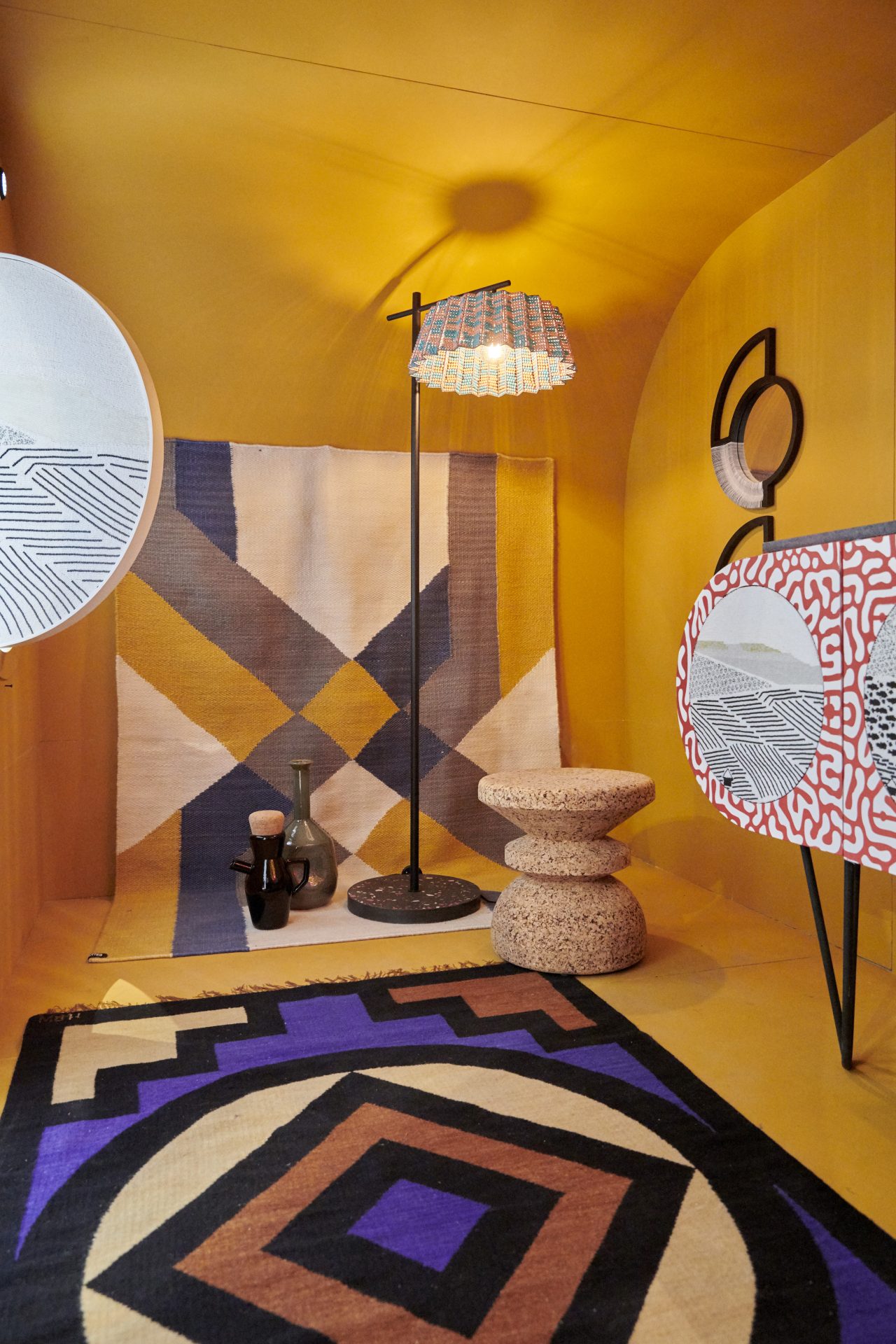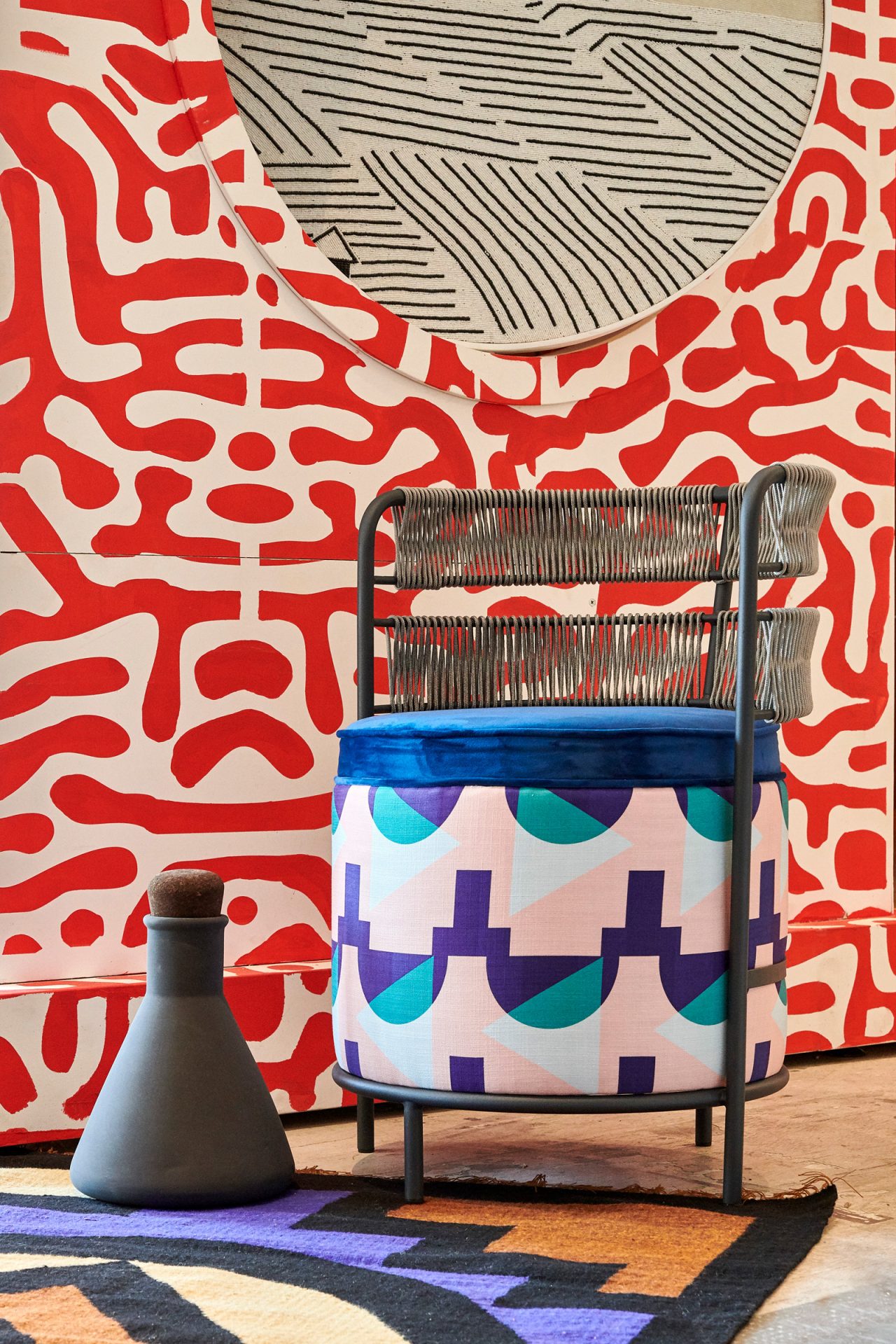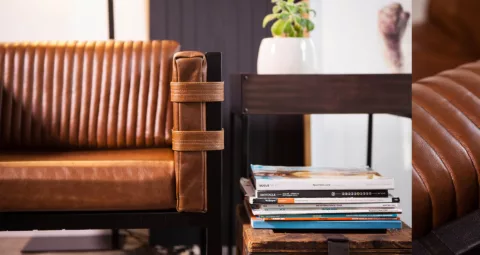SA Design, fired up by Nando’s at Milan Design Fair, 2019
Photographs by: Aldwin van Krimpen
‘Nothing is so sacred that it can’t be adapted to ensure its survival. We do have to adapt a little bit in order to survive,’ says Thabisa Mjo, founder of Mash. T Design studio. It’s the last week of March 2019; we’re at 99 Juta in Braamfontein, Johannesburg, at Apartment 2B, a retail space that her collection of lights and furniture harmoniously shares with two other design brands, Monique Vee and TheUrbanative. In exactly two weeks time, she would be heading to Milan Design Week to present ‘Sacrosanct’, an exhibition that she curated, featuring the work of seven South African designers, including herself. She is explaining to me the reason for the exhibition’s name, and why it would be housed in what resembles a small hut.
If we were to collaborate more and drop the idea that there can be only one winner, especially in South Africa, we would then be in a better position to increase the pie, to ensure the survival of the business of design in South Africa’

‘The idea first came to me when I had the opportunity to visit Rome with my mom, who is a devout Catholic. I’m not Catholic but I loved visiting the cathedrals; they’re so beautiful and so well-maintained. I thought to myself, had the church or the government not allowed those cathedrals to be opened up to tourists, would they still be standing?
I imagined that they were well maintained in part to encourage us tourists to go in there and marvel at their beauty,’ she explains. ‘Then I just started thinking about all the things that we hold sacred, our cultural beliefs and our heritage. What can we adapt in order to ensure that our beliefs and our culture and our heritage survives?’
Being from the Eastern Cape, Thabisa is always quick to point out that her home province is often the first place that comes to mind when she is in search of inspiration. In fact, one of her most well-known pieces, the Potjie server, is a cabinet which features three images that are reminiscent of vegetable fields in rural Eastern Cape. This time, in Rome, she recalled her grandmother’s homestead. Says Thabisa: ‘I thought of her round rondavel hut.
I remembered how, as I got older, the hut suddenly started expanding sideways into a shape like a banana loaf. As the family’s needs grew, maybe as they started acquiring more things they thought “now we can actually add a kitchen, we don’t have to do everything in this one space”, so the homestead had to grow to fit their needs.’
Initially, upon receiving the invite to exhibit as part of Ventura Future Base in the Tortona district as part of Milan Design Week, Thabisa reached out to Nando’s for sponsorship support. And later, as the idea to build a hut took hold, she spoke to Nando’s design programme creative director, Tracy Lynch. ‘I told her that I wanted to build a house and she was like, “OK, now think about the server, think about that form, think about those shapes”, and it just made so much sense to me. I was like, “Oh my gosh, yes, of course, the Potjie server can be the house”, it would then become exactly what my grandmother’s home evolved into; a space that reflects and accommodates growth.’

With growth and adaptation in mind, she also thought about the way business is done, about the way certain elements of contemporary culture push the idea of competition over collaboration. ‘If we were to collaborate more and drop the idea that there can only be one winner, especially in South Africa, we would then be in a better position to increase the pie, to ensure the survival of the business of design in South Africa. And that’s why it was important to include other designers as part of the ‘Sacrosanct’ installation. That’s what it’s about, right? If we want to make a strong showing of South African design and launch South African design as a category brand, it can’t just be about one person. You know what I mean?’
The final installation, a team effort both in its construction as well as its contents, featured works from a diverse range of young South African designers, at different stages of their business journeys, from the emerging through to the established. Two of the designers, The Ninevites founder, Nkuli Mlangeni, and The Urbanative founder, Mpho Vackier, also joined Tracy and Thabisa in Milan. ‘I think the preparation was nerve-wracking more than anything as there were so many moving parts to the showcase, as well as the practicalities of pulling off a show of that size, such as the building and dressing up of the hut. It takes so many hands and so much support to get ready for a showcase of that magnitude, and it could only be pulled off by a community, which I think was our strength,’ says Mpho.
‘Milan Design Week is one of the best design fairs, very international, and you are amongst the best of the best. The people who are participating, their work is incredible,’ adds Nkuli.


With Milan Design Week 2019 behind them, and everyone back at the daily grind of building sustainable businesses, Mpho reflects some more on the experience: ‘Being part of the Milan showcase collective and getting the opportunity to represent the South African design landscape was such a powerful experience in that it became more about the collective, the South African design and craft collective, than our individual brands and businesses. The most amazing aspect of this opportunity was being able to have control in how our stories individually and as a collective were told. It was beautiful to witness that, especially when we were being our authentic selves in front of the world. We were relevant and powerful.’

Watch the video here.

